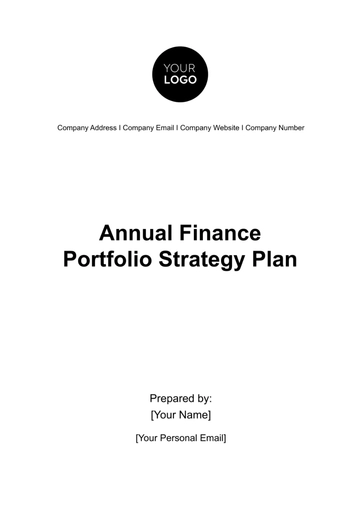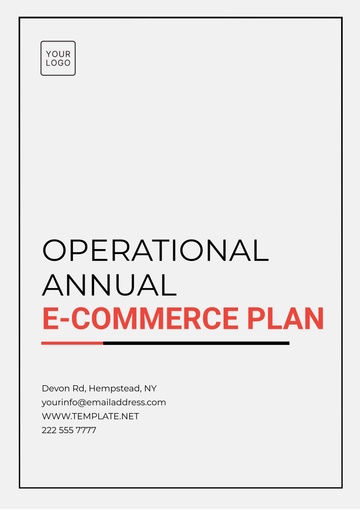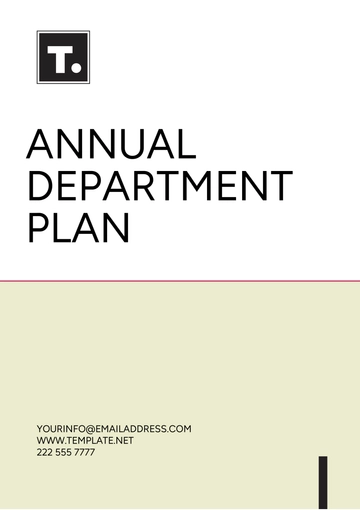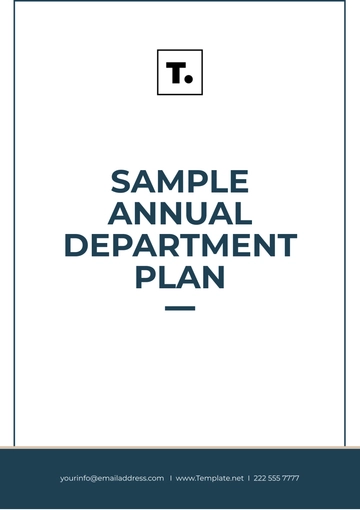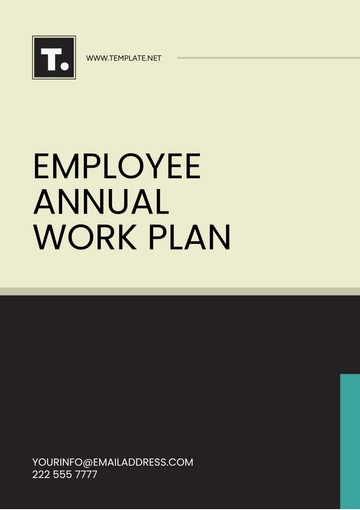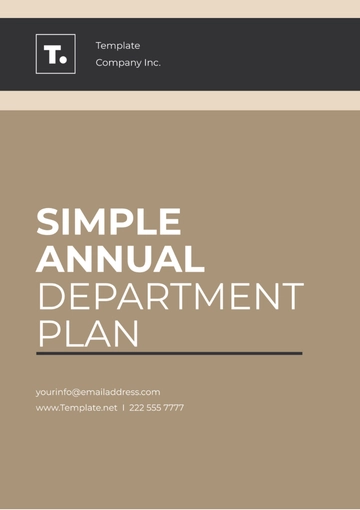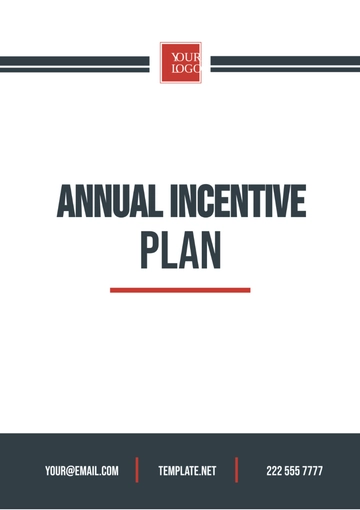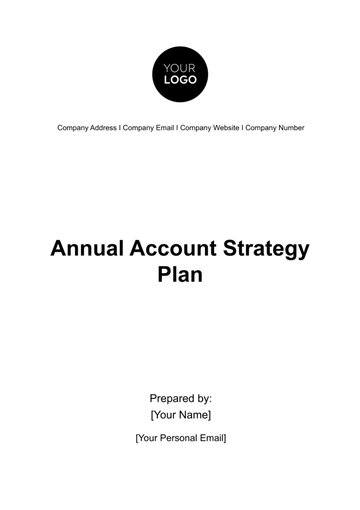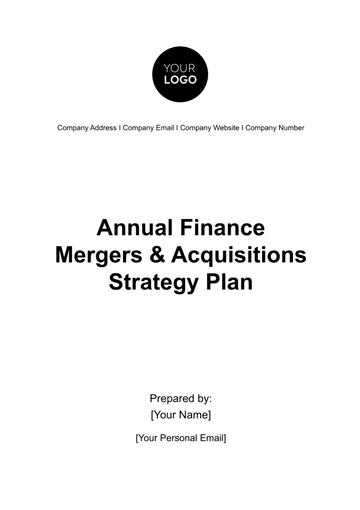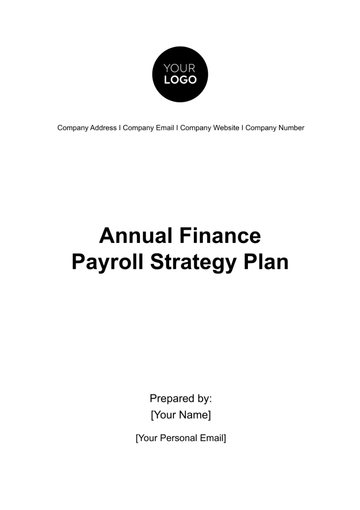Free Annual Finance Mergers & Acquisitions Strategy Plan

Executive Summary
A. Overview
In [2050], as the global financial landscape undergoes dynamic transformations, [Your Company Name] seizes the opportunity to present the Annual Finance Mergers & Acquisitions Strategy Plan. This comprehensive plan is crafted to navigate the evolving market conditions strategically. By embracing mergers and acquisitions, we aim to fortify our market presence, foster innovation, and achieve sustained financial prosperity.
The financial sector is witnessing unprecedented changes, marked by technological advancements, regulatory shifts, and evolving customer preferences. [Your Company Name] recognizes the significance of staying ahead of these changes and is committed to leveraging strategic M&A activities to position itself as an industry leader.
B. Key Objectives
Our key objectives revolve around precision and foresight:
Identify potential acquisition targets: Through meticulous analysis and industry insight, we aim to pinpoint entities that align seamlessly with our strategic goals and cultural values.
Evaluate financial feasibility and synergy: Rigorous financial scrutiny will be applied to ensure that potential targets not only bring financial stability but also synergize seamlessly with our existing operations.
Develop a comprehensive integration plan: A well-structured integration plan will be devised to facilitate a smooth transition, maximize synergies, and minimize operational disruptions.
Ensure regulatory compliance: Regulatory adherence is non-negotiable. We commit to navigating the complex regulatory landscape diligently, mitigating risks associated with non-compliance.
Company Profile
A. [Your Company Name]
In the heart of the financial services sector, [Your Company Name] stands as a beacon of innovation and reliability. As of the last fiscal year:
Industry: | Financial Services |
Revenue (Previous Year): | [$500 million] |
Market Share: | [10%] |
Key Achievements:
Introduced innovative financial products: Our commitment to innovation resulted in a [15%] revenue increase, setting a precedent for industry standards.
Expanded market presence: [5] new branches opened, strategically positioning us for increased market penetration.
B. Financial Health
Our financial health is robust, providing a solid foundation for strategic endeavors:
Current Assets: | [$300 million] |
Liabilities: | [$150 million] |
Net Profit (Previous Year): | [$80 million] |
Debt-to-Equity Ratio: | [0.75] |
Market Analysis
A. Industry Trends
The financial services industry is undergoing transformative shifts, shaping the future landscape and presenting both challenges and opportunities. Key industry trends include:
Shift towards Digital Banking
The industry is experiencing a fundamental transition towards digital banking solutions. [Your Company Name] recognizes the significance of this trend and is poised to leverage it to enhance customer experience and operational efficiency. Digital banking adoption not only improves accessibility but also allows for innovative service delivery, positioning us as a leader in the rapidly evolving digital financial ecosystem.
Emphasis on Sustainable Finance
Customers are increasingly prioritizing sustainability and socially responsible financial practices. [Your Company Name] acknowledges this shift and is committed to integrating sustainable finance principles into our operations. By aligning with environmental, social, and governance (ESG) standards, we aim to meet customer expectations and contribute positively to the global community.
B. Competitor Analysis
In a fiercely competitive landscape, understanding competitor dynamics is crucial for strategic decision-making. An in-depth analysis of key competitors, [Competitor A] and [Competitor B], reveals:
[Competitor A]
Strengths: A robust customer base and leading market share.
Weaknesses: Limited digital presence and reliance on outdated technology.
Opportunities: Expansion into untapped markets and technological advancements.
[Competitor B]
Strengths: Innovative product offerings and a diverse service portfolio.
Weaknesses: Geographic constraints and a less diverse product range.
Opportunities: Market expansion through strategic partnerships and acquisitions.
M&A Criteria
A. Target Identification
The criteria for identifying potential targets are refined to ensure strategic alignment and a seamless integration process. A sample target, [Your Partner Company Name], exemplifies our approach:
Sample Target: [Your Partner Company Name]
Attribute | Details |
|---|---|
Industry | Financial Technology |
[Your Partner Company Name] emerges as an ideal target due to its alignment with our strategic goals, complementary product offerings, and a robust customer base. The fintech industry focus enhances our digital capabilities and positions us to capture new market segments effectively.
B. Due Diligence
Rigorous due diligence is essential to evaluate potential targets thoroughly. For [Your Partner Company Name], the following metrics provide insight:
Financial Analysis - [Your Partner Company Name]
Metric | Value |
|---|---|
EBITDA | [$10 million] |
Operational Analysis - [Your Partner Company Name]
Metric | Value |
|---|---|
Overhead Cost Ratio | [19]% |
Financial Forecast
A. Revenue Projections
As [Your Company Name] embarks on strategic M&A initiatives, our revenue projections aim to reflect both organic and inorganic growth. These projections are based on a comprehensive analysis of market trends, historical performance, and the anticipated impact of the mergers and acquisitions:
Growth Source | Revenue Projection |
|---|---|
Organic Growth | [$7 million] |
Inorganic Growth | [$10 million] |
Total Projected Revenue | [$17 million] |
Organic Growth: This represents the anticipated increase in revenue resulting from existing operations, new product launches, and market share expansion strategies. The estimate is based on historical growth rates and market analysis.
Inorganic Growth: The projection accounts for the revenue contribution from the identified acquisition target (e.g., [Your Partner Company Name]). The figure considers the target's current revenue and potential synergies.
B. Cost Synergies
Efficient cost management and synergies are pivotal for the success of mergers and acquisitions. The following details outline the identified synergies and associated integration costs:
Identified Synergies | Integration Costs |
|---|---|
[$5 million] | [$3.4 million] |
Identified Synergies: This figure represents the anticipated cost savings and operational efficiencies resulting from the integration of [Your Company Name] and the acquired entity. These synergies may arise from streamlining processes, eliminating duplicates, and optimizing resources.
Integration Costs: This includes expenses associated with merging operations, systems, and teams. Costs cover activities such as IT system integration, employee training, and rebranding efforts.
Regulatory Compliance
A. Legal Considerations
Navigating the complex regulatory landscape demands meticulous planning to ensure a seamless and compliant M&A process:
Regulatory Landscape: The M&A process will adhere to federal and international financial regulations, ensuring compliance at every stage.
Compliance Strategy: [Your Company Name] will collaborate with legal experts to develop a robust compliance strategy. This strategy encompasses thorough due diligence to identify and address potential legal issues, timely reporting to regulatory authorities, and adherence to all relevant financial laws and regulations.
Integration Plan
A. Post-Merger Integration Team
The success of the integration process relies on a dedicated and capable team. The integration team comprises individuals with diverse expertise and a proven track record in successful mergers and acquisitions:
Integration Team Members
Name | Role |
|---|---|
[Your Name] | Chief Integration Officer |
Roles and Responsibilities
[Your Name] (Chief Integration Officer): Oversee the entire integration process, ensuring alignment with strategic objectives and effective communication across teams.
[Integration Team Member 1 (Head of Finance Integration):] Manage the financial aspects of integration, including budgeting, cost synergies realization, and financial reporting alignment.
[Integration Team Member 2 (Technology Integration Specialist):] Lead the integration of IT systems, ensuring a seamless transition and optimizing technology resources.
[Integration Team Member 3 (Human Resources Integration Lead):] Handle the integration of human resources, focusing on cultural alignment, talent retention, and workforce restructuring.
B. Timelines
The integration process will be meticulously planned, with clear timelines for pre- and post-integration activities:
Pre-Integration Timelines
Month 1-2: | Conduct initial assessments and due diligence. |
Risk Management
A. Identification
Identifying potential risks is crucial for proactive risk management. Key risk areas include:
Market Risks
Economic Downturn: A sudden economic downturn could impact customer spending and financial stability.
Regulatory Changes: Changes in financial regulations could pose challenges to compliance.
Operational Risks
Technology Integration Issues: Challenges in integrating IT systems may disrupt operations.
Employee Resistance: Resistance to change among employees could hinder the integration process.
B. Mitigation Strategies
Proactive measures will be implemented to mitigate identified risks:
Economic Downturn: Maintain a diversified portfolio to withstand economic fluctuations.
Regulatory Changes: Regularly monitor regulatory updates and adapt processes accordingly.
Technology Integration Issues: Conduct thorough testing and engage IT specialists for a smooth integration.
Employee Resistance: Implement a comprehensive communication and change management plan to address concerns and foster a positive transition.
Financial Evaluation
A. Valuation Methodology
Determining the value of the acquisition is critical for making informed decisions. [Your Company Name] will employ the following valuation methodologies:
Earnings Before Interest, Taxes, Depreciation, and Amortization (EBITDA)
Multiplier: | 7.5 times EBITDA |
Calculation: | [$10 million EBITDA * 7.5 = $75 million] |
Discounted Cash Flow (DCF)
Discount Rate: | [10%] |
Calculation: | Present value of expected future cash flows |
B. Offer Price
Based on the valuation methodologies, [Your Company Name] proposes the following offer price for [Your Partner Company Name]:
Proposed Offer Price
Per Share: | [$10.99] |
Total Offer: | [$16 million] |
Conclusion
In concluding the Annual Finance Mergers & Acquisitions Strategy Plan, [Your Company Name] envisions a successful execution of the proposed strategies. The offer price for [Your Partner Company Name] is a culmination of thorough financial evaluation, considering both EBITDA multiples and discounted cash flow.
For further inquiries or discussions regarding this M&A strategy, please contact:
[Your Name]
[Your Company Email]
[Your Company Number]
- 100% Customizable, free editor
- Access 1 Million+ Templates, photo’s & graphics
- Download or share as a template
- Click and replace photos, graphics, text, backgrounds
- Resize, crop, AI write & more
- Access advanced editor
Elevate your financial strategies with the Annual Finance Mergers & Acquisitions Strategy Plan Template exclusively from Template.net. This editable and customizable template empowers you to craft a comprehensive strategy plan tailored to your organization's needs. Harness the power of our Ai Editor Tool to seamlessly edit and refine the document, ensuring it aligns perfectly with your unique business goals. Streamline your annual planning process effortlessly with this versatile template.
You may also like
- Finance Plan
- Construction Plan
- Sales Plan
- Development Plan
- Career Plan
- Budget Plan
- HR Plan
- Education Plan
- Transition Plan
- Work Plan
- Training Plan
- Communication Plan
- Operation Plan
- Health And Safety Plan
- Strategy Plan
- Professional Development Plan
- Advertising Plan
- Risk Management Plan
- Restaurant Plan
- School Plan
- Nursing Home Patient Care Plan
- Nursing Care Plan
- Plan Event
- Startup Plan
- Social Media Plan
- Staffing Plan
- Annual Plan
- Content Plan
- Payment Plan
- Implementation Plan
- Hotel Plan
- Workout Plan
- Accounting Plan
- Campaign Plan
- Essay Plan
- 30 60 90 Day Plan
- Research Plan
- Recruitment Plan
- 90 Day Plan
- Quarterly Plan
- Emergency Plan
- 5 Year Plan
- Gym Plan
- Personal Plan
- IT and Software Plan
- Treatment Plan
- Real Estate Plan
- Law Firm Plan
- Healthcare Plan
- Improvement Plan
- Media Plan
- 5 Year Business Plan
- Learning Plan
- Marketing Campaign Plan
- Travel Agency Plan
- Cleaning Services Plan
- Interior Design Plan
- Performance Plan
- PR Plan
- Birth Plan
- Life Plan
- SEO Plan
- Disaster Recovery Plan
- Continuity Plan
- Launch Plan
- Legal Plan
- Behavior Plan
- Performance Improvement Plan
- Salon Plan
- Security Plan
- Security Management Plan
- Employee Development Plan
- Quality Plan
- Service Improvement Plan
- Growth Plan
- Incident Response Plan
- Basketball Plan
- Emergency Action Plan
- Product Launch Plan
- Spa Plan
- Employee Training Plan
- Data Analysis Plan
- Employee Action Plan
- Territory Plan
- Audit Plan
- Classroom Plan
- Activity Plan
- Parenting Plan
- Care Plan
- Project Execution Plan
- Exercise Plan
- Internship Plan
- Software Development Plan
- Continuous Improvement Plan
- Leave Plan
- 90 Day Sales Plan
- Advertising Agency Plan
- Employee Transition Plan
- Smart Action Plan
- Workplace Safety Plan
- Behavior Change Plan
- Contingency Plan
- Continuity of Operations Plan
- Health Plan
- Quality Control Plan
- Self Plan
- Sports Development Plan
- Change Management Plan
- Ecommerce Plan
- Personal Financial Plan
- Process Improvement Plan
- 30-60-90 Day Sales Plan
- Crisis Management Plan
- Engagement Plan
- Execution Plan
- Pandemic Plan
- Quality Assurance Plan
- Service Continuity Plan
- Agile Project Plan
- Fundraising Plan
- Job Transition Plan
- Asset Maintenance Plan
- Maintenance Plan
- Software Test Plan
- Staff Training and Development Plan
- 3 Year Plan
- Brand Activation Plan
- Release Plan
- Resource Plan
- Risk Mitigation Plan
- Teacher Plan
- 30 60 90 Day Plan for New Manager
- Food Safety Plan
- Food Truck Plan
- Hiring Plan
- Quality Management Plan
- Wellness Plan
- Behavior Intervention Plan
- Bonus Plan
- Investment Plan
- Maternity Leave Plan
- Pandemic Response Plan
- Succession Planning
- Coaching Plan
- Configuration Management Plan
- Remote Work Plan
- Self Care Plan
- Teaching Plan
- 100-Day Plan
- HACCP Plan
- Student Plan
- Sustainability Plan
- 30 60 90 Day Plan for Interview
- Access Plan
- Site Specific Safety Plan
